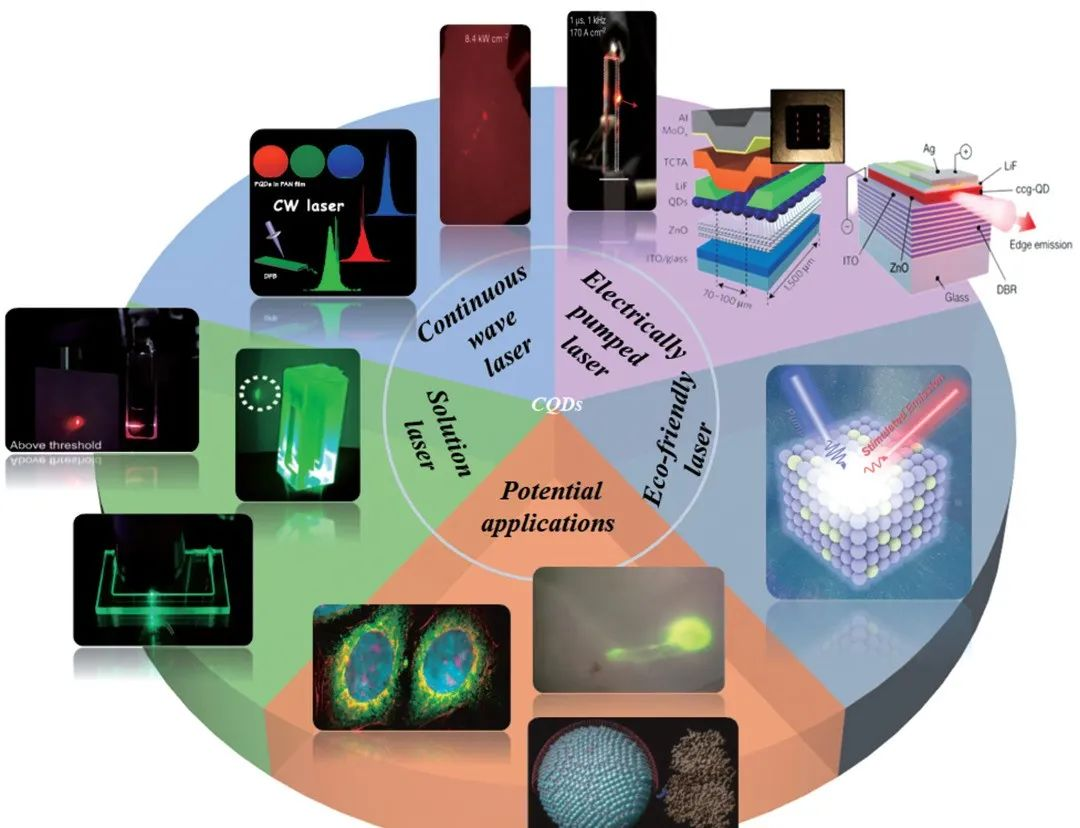Research progress of colloidal quantum dot lasers
According to the different pumping methods, colloidal quantum dot lasers can be divided into two categories: optically pumped colloidal quantum dot lasers and electrically pumped colloidal quantum dot lasers. In many fields such as the laboratory and industry, optically pumped lasers, such as fiber lasers and titanium-doped sapphire lasers, are playing an important role. In addition, in some specific scenarios, such as in the field of optical microflow laser, the laser method based on optical pumping is the best choice. However, considering the portability and wide range of applications, the key to the application of colloidal quantum dot lasers is to achieve laser output under electric pumping. However, until now, electrically pumped colloidal quantum dot lasers have not been realized. Therefore, with the realization of electrically pumped colloidal quantum dot lasers as the main line, the author first discusses the key link of obtaining electrically injected colloidal quantum dot lasers, that is, the realization of colloidal quantum dot continuous wave optically pumped laser, and then extends to the colloidal quantum dot optically pumped solution laser, which is highly likely to be the first to realize commercial application. The body structure of this article is shown in Figure 1.

Existing challenge
In the research of colloidal quantum dot laser, the biggest challenge is still how to obtain a colloidal quantum dot gain medium with low threshold, high gain, long gain life and high stability. Although novel structures and materials such as nanosheets, giant quantum dots, gradient gradient quantum dots, and perovskite quantum dots have been reported, no single quantum dot has been confirmed in multiple laboratories to obtain continuous wave optically pumped laser, which indicates that the gain threshold and stability of quantum dots are still insufficient. In addition, due to the lack of unified standards for the synthesis and performance characterization of quantum dots, the gain performance reports of quantum dots from different countries and laboratories differ greatly, and the repeatability is not high, which also hinders the development of colloidal quantum dots with high gain properties.
At present, the quantum dot electropumped laser has not been realized, indicating that there are still challenges in the basic physics and key technology research of quantum dot laser devices. Colloidal quantum dots (QDS) are a new solution-processable gain material, which can be referred to the electroinjection device structure of organic light-emitting diodes (leds). However, recent studies have shown that simple reference is not enough to realize the electroinjection colloidal quantum dot laser. Considering the difference in electronic structure and processing mode between colloidal quantum dots and organic materials, the development of new solution film preparation methods suitable for colloidal quantum dots and materials with electron and hole transport functions is the only way to realize the electrolaser induced by quantum dots. The most mature colloidal quantum dot system is still cadmium colloidal quantum dots containing heavy metals. Considering environmental protection and biological hazards, it is a major challenge to develop new sustainable colloidal quantum dot laser materials.
In future work, the research of optically pumped quantum dot lasers and electrically pumped quantum dot lasers should go hand in hand and play an equally important role in basic research and practical applications. In the process of practical application of colloidal quantum dot laser, many common problems need to be solved urgently, and how to give full play to the unique properties and functions of colloidal quantum dot remains to be explored.
Post time: Feb-20-2024





